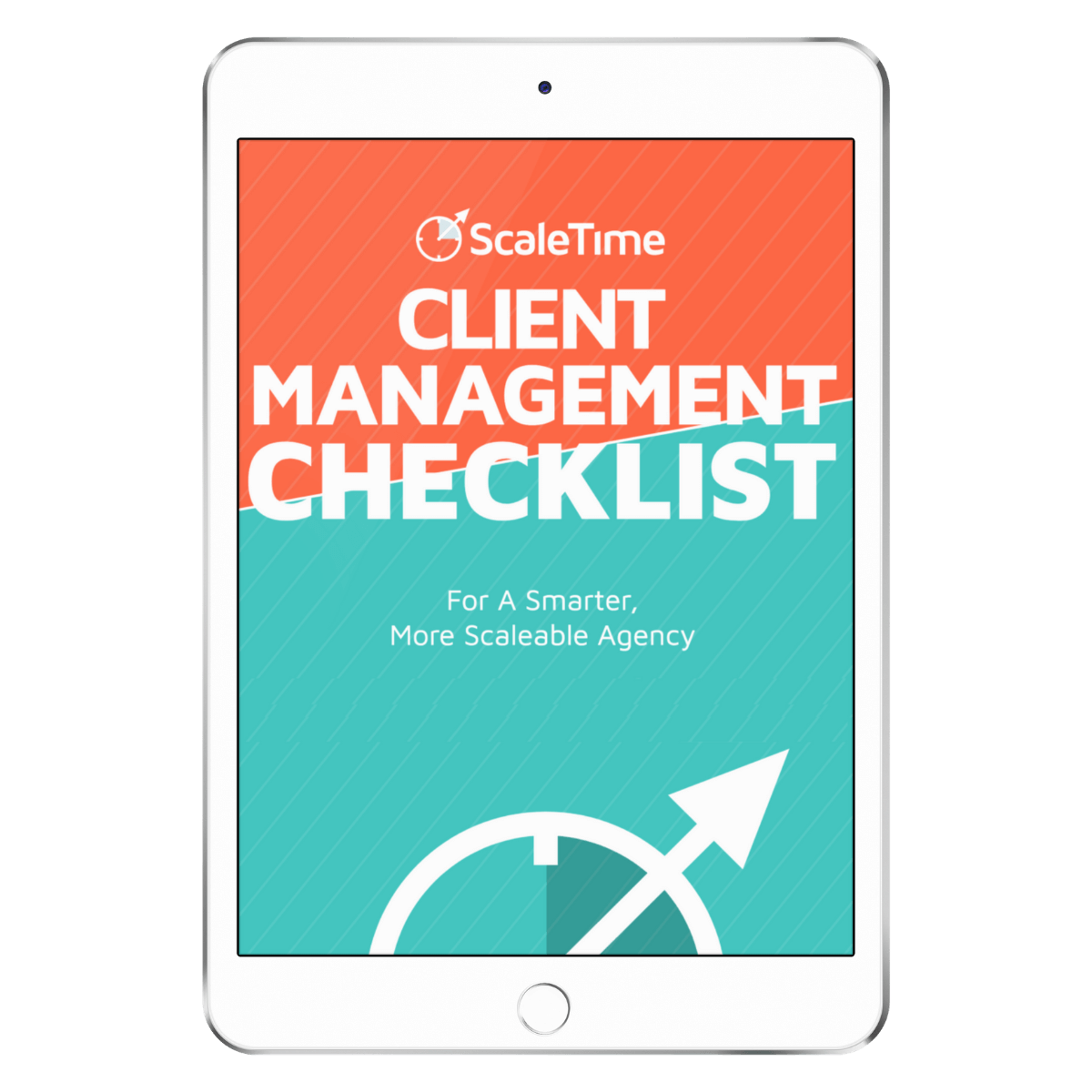
Does the thought of setting up or learning how to use an intranet for your company seem overwhelming? While you may feel this way, feelings (fortunately in this case) aren't facts.
Although building your company intranet is necessary if your goal is to have secure and seamless collaboration between employees, it's not that hard to get started. We'll show you the way!
Welcome to the Intra-NetFlix of small businesses, where the only binging you'll be doing is on productivity and seamless collaboration. Buckle up and let's dive into the world of intranets, revealing how they can boost your small business's performance.
What Is an Intranet?

An intranet is a private network that's used within an organization to facilitate internal communication and collaboration. To build a modern intranet, you need a network, server, and relevant content for your company.
Only authorized personnel of the organization can access a company intranet. The network is password-protected and only accessible to authorized users within the company. So, any sensitive information shared on the network remains confidential.
On this private network, employees can share information, resources, and tools that are only relevant to their organization.
Employees at a company might use the intranet to:
- Access internal databases
- Collaborate on projects
- Communicate internally
Let's consider the benefits of building an intranet site, and then learn how to build an intranet solution for your company.
Types of Intranet Platforms

There are two main types of intranet platforms:
- On-premise
- Cloud-based
On-premise intranet software is hosted on-site with on-premise infrastructure and managed by a dedicated IT team. In contrast, cloud-based intranet software is cloud-based and available online.
Depending on a company's size and expertise, an intranet could have features like:
- A central portal for accessing internal resources, such as documents, employee directories, and company news.
- Collaboration tools, like chat rooms and project management software, help teams work together more effectively
- Secure access controls to ensure that sensitive data is only available to authorized personnel
- Integration with other tools
There are lot of benefits to using an intranet. But ultimately, implementing a company-wide intranet will make documentation easier and boost employee productivity and efficiency.
Let's get into the nitty-grittier benefits next.
What Are the Benefits of Building an Intranet for Your Company?

Discombobulated workflows? Remote work feel too much like trying to herd alley cats? Then you might need to build a company intranet to better facilitate and manage remote work.
This can:
- Improve employee engagement
- Build company culture
- Keep up with your employees
- Know what your team is working on
- Identify where your team members are in the process
Et cetera.
Either way, a company intranet is an important tool that can make your work as a project manager or company manager easier.
Let's dig a bit deeper to understand why you should build a company intranet.
Security

The good news is, intranets are typically more secure than other communication methods, such as email or public messaging platforms.
Because they're private networks, you can design them with security features that ensure that confidential information is only accessible by authorized personnel.
Centralization
An intranet allows companies to centralize their communication and collaboration tools in one place, making business processes seamless. And, also making it easier for employees to access the information and resources they need.
So, you end up saving a lot of time and reducing confusion with your team, since you're eliminating the need to switch between different applications or platforms.
Customization
In addition, you can also customize an intranet to meet your company's specific needs.
Design the intranet to reflect your company's branding, culture, and values. Tailor it to the specific workflows and processes that are used within your organization.
The sky's the limit!
Improved collaboration and communication

Regardless of where your team members are located, an intranet facilitates collaboration and knowledge sharing among them.
This can help create a free flow of communication within the organization, improve communication, and boost productivity, making it easier for a company to reach its business goals.
Cost savings
An intranet can also help companies save money.
How so?
Well, it reduces the need for paper-based communication and streamlining processes.
For example, an intranet-based workflow management system can help automate processes, reduce manual intervention, and increase efficiency.
Cost savings. Ka-ching!
Increased productivity

Employees can access important information, documents, and resources in one centralized location when a company has an intranet.
This saves time and eliminates the need for you or your employees to search through various databases, emails, or paper files.

Key Considerations When Building an Intranet
Modern intranets should be tailored to a company's objectives. Ideally, you want to become the number one go-to resource for employees and leadership.
So, how can you build a new intranet or upgrade to a better one?
These are the steps you should consider to get started.
Define your intranet's goals and objectives
Before building a company intranet, clearly define its purpose and goals so you know what you want to achieve and if it will fit your company strategy.
So , consider your company's specific needs in order to create a roadmap for the development process.
This will include the following:
- Create a strong company brand
- Connect workers (both remote and in-office workers)
- Enhance productivity
- Improve employee experiences
When you start with your objectives, you'll have a much easier time building your intranet.
Remember, one of a company intranets biggest benefits is your ability to customize it.
Conduct a needs assessment within your organization
Identify the features and functionality needed to achieve your goals, such as a company directory, a document management system, an internal messaging system, or an event calendar.
But don't rely on guesswork.
Get your employees' input on their preferred collaboration channels, devices, and features. This will ensure that your intranet is useful for your unique team.
Choose the right platform for developing your intranet
There are two options when creating your company intranet – you either use an off-the-shelf company network option or a cloud intranet solution.
Off-the-shelf options
An off-the-shelf company network option will require you to install intranet software such as Drupal, WordPress, or SharePoint Intranet on your server so that you can insert content or generate pages.
You will need to have some level of technical knowledge to set up and manage the intranet or have a designated IT team.
Despite doing it yourself which comes with great savings, you will still need to pay a fee to have custom features installed that will benefit your company because the free features are limited and not very useful.
Cloud intranet solutions
For cloud intranet solutions, you'll pay a fixed monthly fee, and your intranet will be hosted online.
Once you pay, you'll follow an intranet template. To make it more interesting, your intranet can have your company logo and colors.
The bottom line
Regardless of which type of intranet you ultimately choose, pick a reputable intranet platform with great reviews and ongoing support.
Also, the right platform should enable integration and push notifications to ensure that employees will not miss any important notices or messages.
Choose a platform that meets your needs and fits your budget
When you budget for your company's intranet, ensure it has real-time communications capabilities, such as push notifications, to allow employees to respond faster, anywhere and anytime.
With that in mind, start with a pilot project and let a small group test it. Then, optimize and tweak the system based on their feedback.
This approach will help you refine your intranet before you roll it out to the whole organization. It will also ensure that the designs are easy to implement even after launching the program.
Starting small helps to ensure you don't waste company resources on unnecessary features. Plus, it cuts delay time since you'll start with the basic features as you receive feedback.
Develop an implementation plan
Here, you will need to identify the key stakeholders in the project – they could be IT personnel, content creators, and end-users.
Have a project management content strategy that includes a plan for creating, organizing, and managing content on the intranet. Consider what types of content your employees need, who will create it, and how often it will be updated.
You'll also have to determine the resources required, such as hardware, software, and personnel.
Set up and customize the intranet
Once you've defined the intranet's purpose, features, and content strategy, it's time to design and build it.
Work with your IT team or a third-party vendor to build the intranet using your chosen platform or software.
Once your intranet is ready, it's time to launch and promote it to your employees. Provide training and support to help your team learn how to use the intranet effectively.
Building Your Intranet
Having a project implementation team from across the organization will help you pick the appropriate intranet software for your organization. They will also help during the initial sitemap, functionality, and design of the intranet.
This team will also ensure you build an effective intranet solution that fits the purpose because they come from across the organization. Once the intranet is ready for use, this team will advocate for it and urge others to get on board.
Now that you have a team in place, here are the basic steps needed to create a company's intranet.
Creating user accounts and setting up access
Consider a web server that has great performance, is reliable, and cost-friendly. Assign each user to their appropriate role and appropriate permissions. This may involve setting up groups or departments and assigning permissions to each group.
Then, you'll need to test the access levels to ensure that each user has the appropriate access level.
For example, a manager may need access to confidential data that is unavailable to other employees. This means that you have to keep intranet monitoring ongoing to ensure that users are only accessing the information and resources they are authorized to access.
Developing a communication plan
To have a seamless communication platform, you should evaluate what might hinder your intranet objectives and how communications can help overcome these barriers. Create awareness about the features that will make communications easier.
Develop a communication plan to inform employees about the intranet and how to use it. This involves defining the intranet's purpose and goals, identifying the target audience, and determining the types of information and resources that will be available.
The communication plan should also include guidelines for accessing and using the intranet and who to contact for support or assistance.
Designing a user-friendly interface
The design of the intranet interface is critical to its success, as it directly impacts the user experience and adoption of the system.
A user-friendly interface should be intuitive and easy to navigate, with clear organization and information labeling. The interface should also be visually-appealing and consistent with the company’s branding and design standards.
The intranet should also be optimized for different devices and screen sizes to ensure that it can be accessed and used effectively from desktops, laptops, tablets, and smartphones.
Tips for Ensuring a Successful Intranet Implementation
Here are some tips that will help with a successful intranet implementation process.
Provide thorough employee training
Your employees may have gotten used to the "old way" of doing things, i.e., having millions of tabs open simultaneously and switching between them.
Maybe that worked for them and they don't really care to try something new. So, you've got to get their buy-in. And usually, that just requires showing your employees how much easier the new system is to use and operate.
So, you'll need to train them.
Use podcasts, webinars, how-to videos, wikis, surveys, and webinars in employee training.
Ensure that you make these training sessions interactive and use project team members to encourage other employees to use the company intranet to its full potential and promote company culture.
Encourage participation and feedback

Employee experience, participation, and feedback count substantially if you want to get the real picture of your company's product. Encourage your employees to use the new intranet and get feedback on what you could add or remove to ensure a seamless transition.
You can also gain insight into your intranet by analyzing usage data and reviewing content to identify popular and unpopular features.
Monitor and evaluate the intranet's effectiveness
By monitoring and evaluating the intranet's effectiveness, you can identify areas requiring improvement and make changes to improve the user experience. This can lead to increased productivity, engagement, and satisfaction among employees.
An ineffective intranet can lead to wasted resources and increased costs. Therefore, when you monitor and evaluate the intranet's effectiveness, you can identify areas where you can save.
Ready to build your intranet and skyrocket productivity? Let's recap.
First, take these steps to build successful intranet solution for your company:
- Define the goals and objectives of the intranet project
- Conduct a needs assessment to identify the features and functionality required
- Select the software that's suitable for your organization's needs
- Design the intranet's user-interface and user-experience to ensure employee buy-in and engagement
- Develop and organize the content and ensure it's accurate, relevant, and current
- Integrate with the other systems and tools your organization uses, like email, calendars, and document management systems
- Implement security measures to protect sensitive information and ensure data privacy
- Test the intranet thoroughly using employees from different departments to identify and resolve any issues before company-wide launch
- Launch the intranet, and provide training and support to users so they can use it effectively
- Monitor and evaluate the intranet's effectiveness over time and make improvements as needed
Although building a company intranet can be time-consuming, you can manage it well with a dedicated team and resources.
Sounds like a lot. You know what makes starting and completing complex tasks a lot easier than just winging it? In the dark? With no roadmap?
A checklist.
Our FREE project management checklist brings transparency to your processes. It will also will help you run your business and reach your objectives more quickly and efficiently.
Let us help you discover how you can manage your team successfully. Download it here! And thank us later.





















%20(1).gif)
